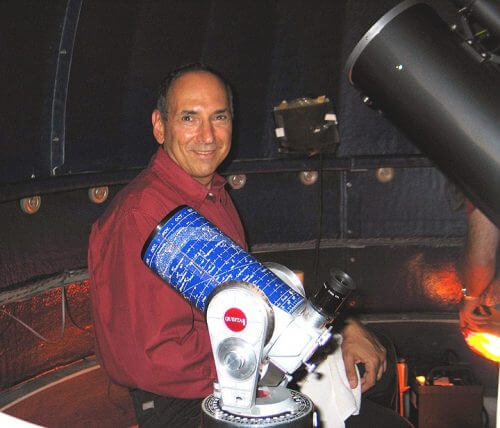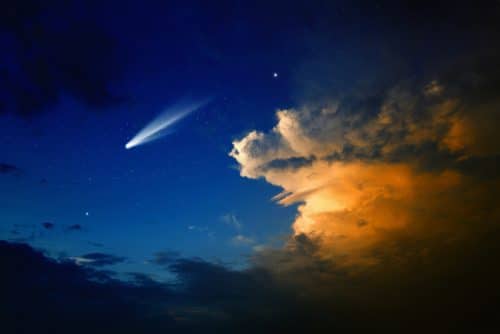A cosmic detective journey that started, no less and no more, because of a French test
David H. Levy

The article was published with the approval of Scientific American Israel and the Ort Israel network
I decided to become a comet hunter on a clear and bright morning 50 years ago in Montreal. To some extent it was a whim of the moment. I was facing a French test and I knew that the examining teacher, Mr. Hutchinson, would ask me about the career I was planning for myself. So I found something that both sounded respectable and I could easily translate into French.
About six years before I was already captivated by the magic of the night sky, but to pass the test it was not enough to stand up and announce "Astronomie!" Mr. Hutchinson would like me to elaborate. I remembered a comet that had been discovered some time before in Japan, a comet that turned out to be the brightest comet observed in the 20th century. Without giving too much thought to the matter, I decided that I would search for comets, among other things. Not coincidentally, the English word for comet, comet, and the French word, cométe, sound very similar to each other, so it was relatively easy to talk about my new profession in French.
When I arrived at school that day, I had already developed a search plan that would last me a lifetime. And true to the answer I gave to Mr. Hutchinson, I started work on Friday evening, December 17th, 1965, when the moon was a waning crescent and its light did not interfere too much. Since that night I have not stopped looking for comets. Fortunately, my work as a science reporter and lecturer on the night sky, and needless to say the loving support of my wife, Wendy, allowed me to persevere in the pursuit of my cosmic passion and still make a decent living.
I called an astronomer at the Lovell Observatory in Flagstaff, Arizona, who confirmed my finding with a terse "You'd better send a telegram." I felt like I could fly straight to the sky that I loved so much. It turned out that Michael Rudenko [an amateur astronomer from Massachusetts] had discovered the comet separately from me the following evening, so the new object was named "Levy-Rudenko Comet". Searching for comets is a much easier task than actually finding them. I had the appropriate equipment: an 8-inch telescope called Pegasus, which would later be enhanced by more powerful instruments. But it took me 19 years to actually find my first comet. That night, November 13, 1984, I began by looking at a faint galaxy I found, then a planetary nebula (the remnant of a fatal explosion of an ancient star) and then a fine cluster of stars. Soon, my attention was focused on a fuzzy bone some distance south of the cluster. Although the light of this object was diffuse, it did not have the symmetry characteristic of a galaxy, nor the dotted appearance of a compact star cluster. I drew the object and some stars in its vicinity on a drawing pad to serve as a reference point. As I looked again and again through the telescope and drew new illustrations, I gradually realized that this fuzzy object was not standing still with the neighboring stars but was creeping north, as only a comet can do.

In the years that followed, I discovered another 22 other comets, alone or in joint work with others. Perhaps the most famous of these is Shoemaker-Levy 9, which was the first comet ever observed crashing into a planet, Jupiter. Working together, Caroline and Eugene Shoemaker and myself, we found this strange space ball in 1993, 16 months before its fiery collision.
I'm still looking for comets, but find it hard to believe I'll be able to find new ones. Comet hunting is completely automated: computers scan images of the night sky taken by robotic means, looking for fuzzy objects moving exactly along the expected path of a comet. My original method of looking directly through the lens of the telescope to find evidence of something no one has seen before is no longer needed. But I still enjoy the visual hunt. After 50 years, it is the joy of the search, not the discoveries, that gives me strength to continue.
for further reading
The Panoramic Survey Telescope and Rapid Response System (Pan-STARRS)
Rosetta Mission to Comet 67P/Churyumov-Grasimenko on the European Space Agency website
Rosetta mission on the NASA website
Comet Shoemaker-Levy 9 Meets Jupiter. David H. Levy, Eugene M. Shoemaker and Carolyn S. Shoemaker; Scientific American, August 1995
More of the topic in Hayadan:
